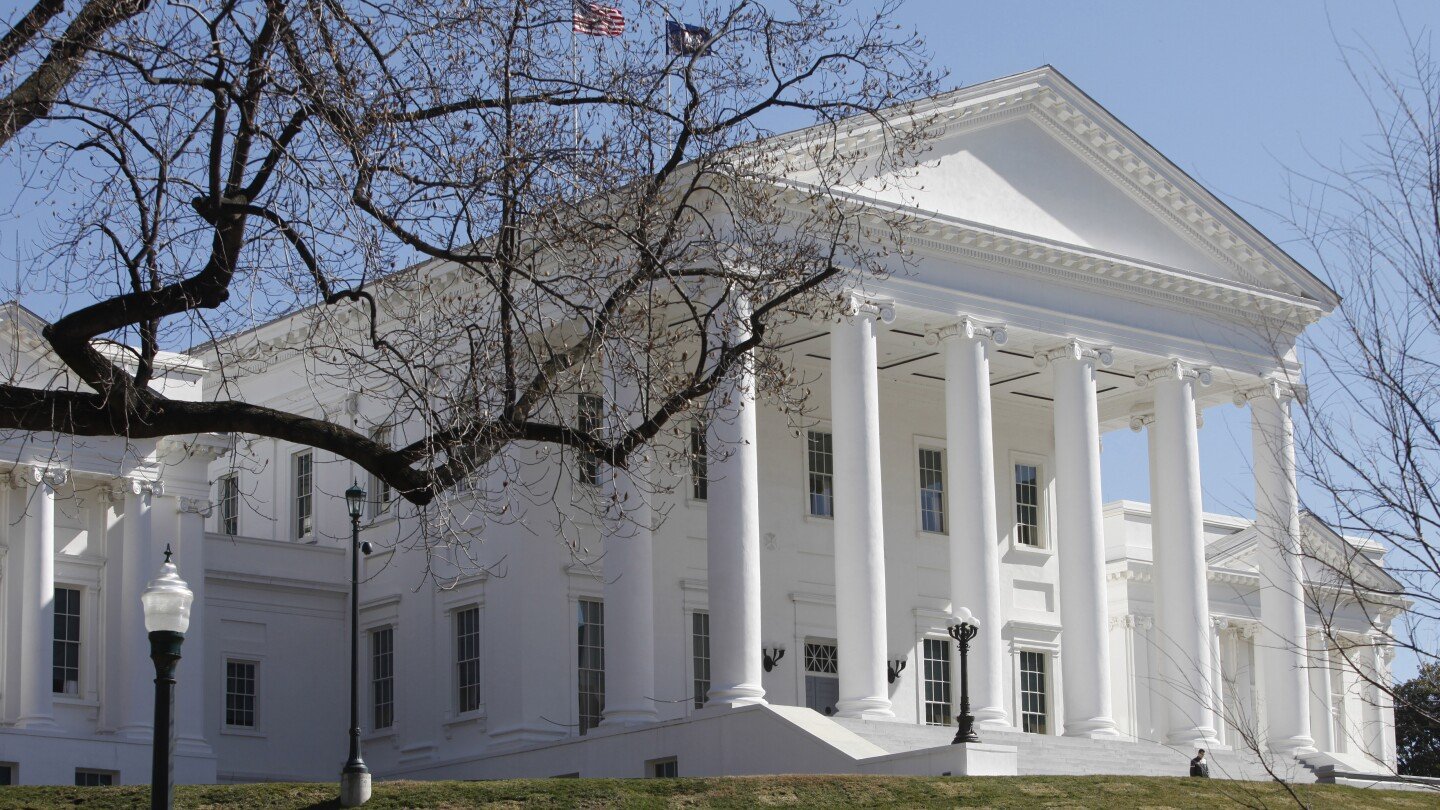
With Manchin out, Democrats’ path to holding the Senate narrows
Sen. Joe Manchin III said he decided to forgo re-election because he’d accomplished all his goals. But for the Democrats he’s leaving behind in Washington, the work to hold the party’s already slim Senate majority is just beginning.
While there are no guarantees in politics, West Virginia is now a virtual lock to flip Republican. The state has become so conservative that only Wyoming delivered a wider Republican margin in the 2020 presidential race.
In the immediate aftermath of Manchin’s announcement, several well-placed Democratic operatives said they couldn’t name a single West Virginian who could take his place on the ballot and be even remotely competitive, particularly if Gov. Jim Justice wins the Republican nomination.
“This is a huge impact,” said Ward Baker, a former executive director for the National Republican Senatorial Committee, the group that oversees Senate races. “Manchin not running will save Republicans a ton of money – and it takes a seat off the board early.”
People are also reading…
Connectz
The path to holding power was always going to be rocky for the Democrats’ current 51-seat majority, with or without Manchin.
Two incumbents are running for re-election in red states, Montana and Ohio. A third senator, Kyrsten Sinema of Arizona, who was elected as a Democrat but has since switched her party affiliation to independent, has yet to declare her plans – leaving open the prospect of an unusually competitive three way race. And the party must also defend four Senate seats in four of the most contested presidential battlegrounds: Wisconsin, Nevada, Pennsylvania and Michigan.
But Republicans face some potentially divisive primaries and a recent history of nominating extreme candidates who have lost key contests.
With West Virginia off the Senate chessboard next year, Democrats must win every race they are defending – and depend on President Biden to win the White House – in order to maintain a majority. In a 50-50 Senate, the vice president casts the tiebreaking vote. But that’s a risky bet considering a plurality of Americans haven’t approved of Biden since August 2021, according to Gallup Polls.
The bad news for Senate Democrats is that they are on defense in each of the seven seats that both parties view as most competitive this year. The good news is that in five of those seven, the party has incumbents running for re-election, which has historically been a huge advantage.
At least 83% of Senate incumbents have won re-election in 18 of the past 21 election cycles, according to OpenSecrets, a nonpartisan group that tracks money in politics. Last year, 100% of Senate incumbents were reelected.
“Given Democratic success in 2020 and 2022, it’d be malpractice to write Democrats off at this stage,” said Justin Goodman, a former top aide to Sen. Chuck Schumer, the majority leader. “Candidates matter,” he said, as well as the ongoing contrast that Democrats have sought to strike against the “extreme MAGA agenda.”
The Democratic incumbents in Montana and Ohio – the top two targets for Republicans, with West Virginia off the map – are seeking re-election in states former President Donald Trump easily won twice. Both Sen. Jon Tester of Montana and Sen. Sherrod Brown of Ohio have exceeded expectations before, but never with such an unpopular presidential candidate at the top of the ticket. And unlike most incumbents, whose victories tend to become easier over time, Tester has always had close races. Brown’s margins have narrowed.
But close victories count just as much as easy ones, and Democrats maintain that the personal brands of both Brown and Tester matter more in their states than national political winds.
Republicans, who are also facing headwinds because of the unpopularity of Trump and the party’s role in rolling back abortion rights, are attempting to follow suit. The National Republican Senatorial Committee is putting a heavy emphasis on candidate recruitment this cycle to find contenders who can appeal to both conservatives and moderates in the party.
The strategy has already paid off in West Virginia.
One of the first calls this year from Sen. Steve Daines, R-Mont., who is overseeing his party’s Senate races, was to Justice in West Virginia, believing that the popular governor’s presence in the race would help persuade Manchin to retire.
The second part of Daines’ strategy in West Virginia was persistently lobbying to secure a Trump endorsement for Justice, with the aim of not just forcing out Manchin but also the hope that it would convince him to run for president as an independent. Trump endorsed Justice last month.
Manchin, meanwhile, furthered speculation of a potential presidential bid by saying Thursday he planned to gauge “interest in creating a movement to mobilize the middle and bring Americans together.”
In 2018, Democrats and Republicans combined spent about $53 million on the West Virginia Senate race. With no competitive race there in 2024, both parties will have tens of millions of dollars to spend on a second tier of battleground races. Last year, candidates, parties and outside groups spent more than $1.3 billion on 36 Senate races, including $737 million in just five states – Arizona, Nevada, Ohio, Pennsylvania, and Wisconsin – that are also on the ballot again next year.
“I think Wisconsin and Michigan are about to get a bunch of Republican money they weren’t going to get otherwise,” said Brad Todd, a Republican strategist who has worked on Senate races.
The most interesting of the second-tier races may be in Arizona, where the state may have a competitive three-way race – a rarity in American politics. The wild-card is Sinema.
If she runs for a second term, she will most likely face Rep. Ruben Gallego, a well-liked progressive Democrat who has already spent $6.2 million on the race this year, and Kari Lake, a firebrand conservative and well-known election denier who is favored in the Republican primary.
A competitive three-way general election would add a riveting dynamic to what could be the most expensive Senate race in the country next year. The state’s Senate contest last year, which pitted Sen. Mark Kelly against Blake Masters, the Republican nominee, cost more than $225 million.
There is no top-flight Republican challenging Sen. Tammy Baldwin in Wisconsin, but the party has been pushing for Eric Hovde, a businessman who ran for Senate in 2012. In Pennsylvania, Republicans have cleared a path for David McCormick with the aim of avoiding a bruising primary and strengthening their bid against Sen. Bob Casey, who is seeking a fourth six year term.
Republicans haven’t been as lucky in Michigan or Nevada.
In Michigan – the only competitive Senate race without an incumbent – Democrats so far have mostly aligned behind Rep. Elissa Slotkin, a former CIA analyst who represents a divided district. Daines recruited former Rep. Mike Rogers, who was chair of the House Intelligence Committee. But James Craig, a former Detroit police chief, and former Rep. Peter Meijer, who lost his seat after voting to impeach Trump, have also entered the Republican race.
The Republican establishment pick in Nevada is Sam Brown, a retired Army captain who lost a Senate primary last year. But he’s facing a primary against Jim Marchant, a Trump loyalist and election denier who lost a race for secretary of state last year. The winner would take on Sen. Jacky Rosen, a Democrat who is seeking her second term.
With West Virginia scotched, the Democratic Senate map is undeniably constricting. But the party will look to go on the offensive in Florida and Texas. Both states have been reliable Republican strongholds in recent years, but Democrats realistically have no better options to flip a Republican seat this year.
In Florida, Sen. Rick Scott, the state’s former governor, is seeking a second term. He’s never won an election by more than 1.2 percentage points, and he’s also never run in a presidential election year – when Democrats typically fare better in Florida.
But the state lurched to the right last year when Republicans won five statewide races on the ballot by an average of 18.9 percentage points. The leading Democratic challenger in the Florida Senate race this year is former Rep. Debbie Mucarsel-Powell, who was unseated from her Miami-based seat after one term.
But to win in Florida and Texas, Democrats will need stars to align in a way they did not in West Virginia.
“Quite possibly the stupidest thing I’ve ever heard,” Baker, the former NRSC director, said of Democratic hopes to take Florida or Texas. “They just lost a Senate seat. No way to spin that.”









